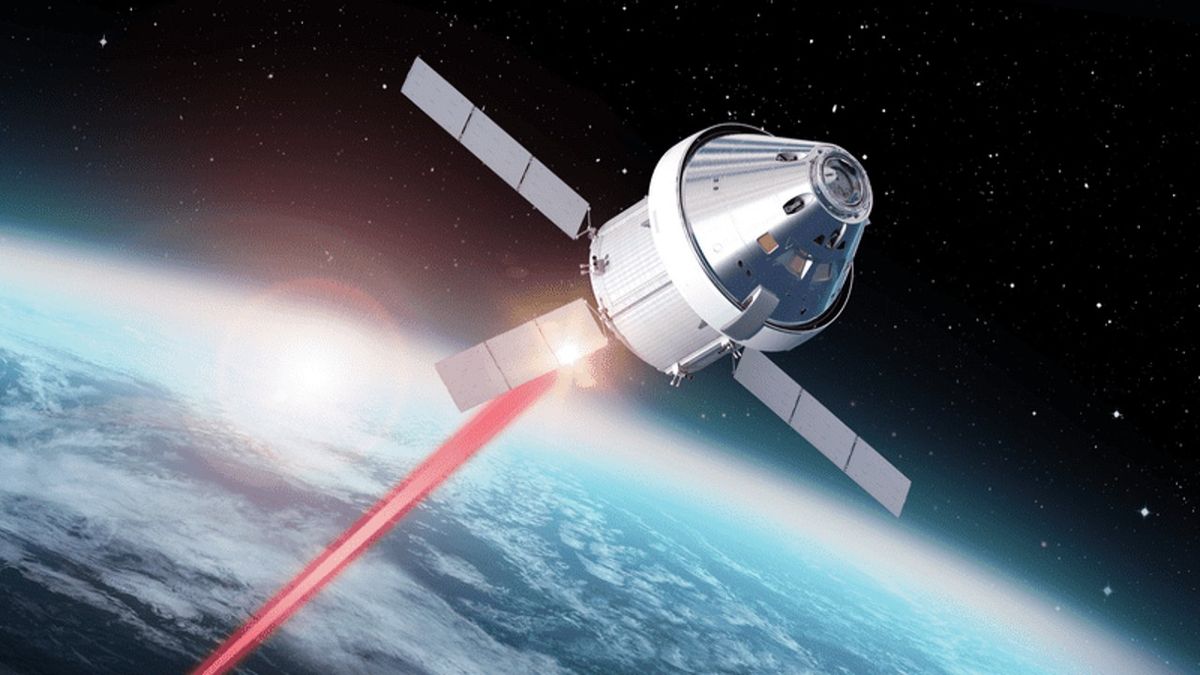
NASA is using lasers to develop how the agency communicates between spacecraft.
In the past, the space agency relied on radio signals broadcast over the Deep Space Network to transmit any kind of scientific data from deep space probes back to Earth. However, lasers have the potential to greatly increase the amount of data spacecraft can transmit, and NASA is ready to send the technology around the moon.
NASA is including laser communications in the form of the Orion Artemis 2 Optical Communications System (O2O) station on Artemis 2, the next manned mission around the moon. “Aboard the Orion capsule, the O2O system will send back high-resolution images and video from the lunar region,” reads a NASA video published in April. If all goes according to plan, the system should enable viewers on Earth to see the moon in real time like never before.
Related: NASA’s Artemis 2 mission: Everything you need to know
Imagine having a dial-up Internet connection for years, then upgrading to gigabit fiber speeds. This is what NASA hopes to achieve for its future spacecraft.
To lay the groundwork for future laser communications, NASA has launched several experimental satellites in recent years. The Laser Communications Demonstration (LCRD) launched in December 2021 was the agency’s first laser relay. This was followed by the launch of the TeraByte InfraRed Delivery (TBIRD) CubeSat last year, which reached data transfer rates of 200Gbps.
Now, NASA is preparing the LCRD Low-Earth-Orbit (LEO) User Modem and Loudspeaker Station (ILLUMA-T), which is expected to be launched to the International Space Station (ISS) later this year. ILLUMA-T will be attached to the exposed facility on the Japanese Experiment Module.
Once operational, ILLUMA-T will transmit data back to Earth through the LCRD on NASA’s first end-to-end laser relay communications system, laying the foundation for the O2O system that will be aboard Orion during Artemis 2.

However, as NASA notes in its recent video, these experiments are “only the beginning of how laser communications pave the way for the advancement of our scientific discoveries.”
The success of Artemis 1 last year put Artemis 2 on an imminent path to launch, which will carry the first astronauts to the moon since 1972. Images from cameras mounted on Orion captivated the world during the spacecraft’s first mission to lunar orbit and back. .
With a crew aboard Artemis 2, NASA expects to transmit not only high-resolution images, but video as well. If all goes according to plan with these laser communications experiments, we can expect to see plenty of live or near-live crew updates with a gorgeous background of the lunar surface visible in the Orion windows.




More Stories
Boeing May Not Be Able to Operate Starliner Before Space Station Is Destroyed
Prehistoric sea cow eaten by crocodile and shark, fossils say
UNC student to become youngest woman to cross space on Blue Origin